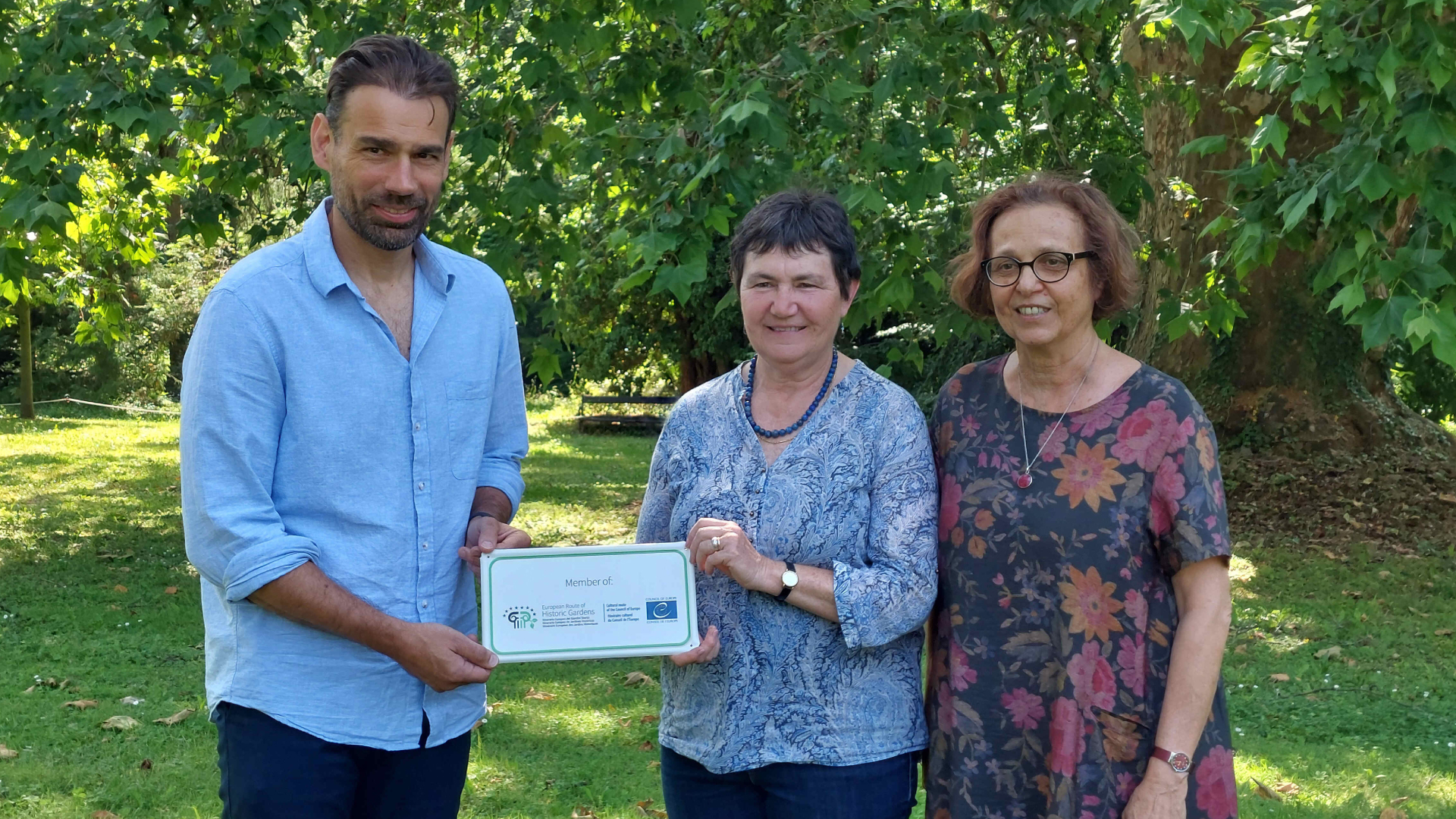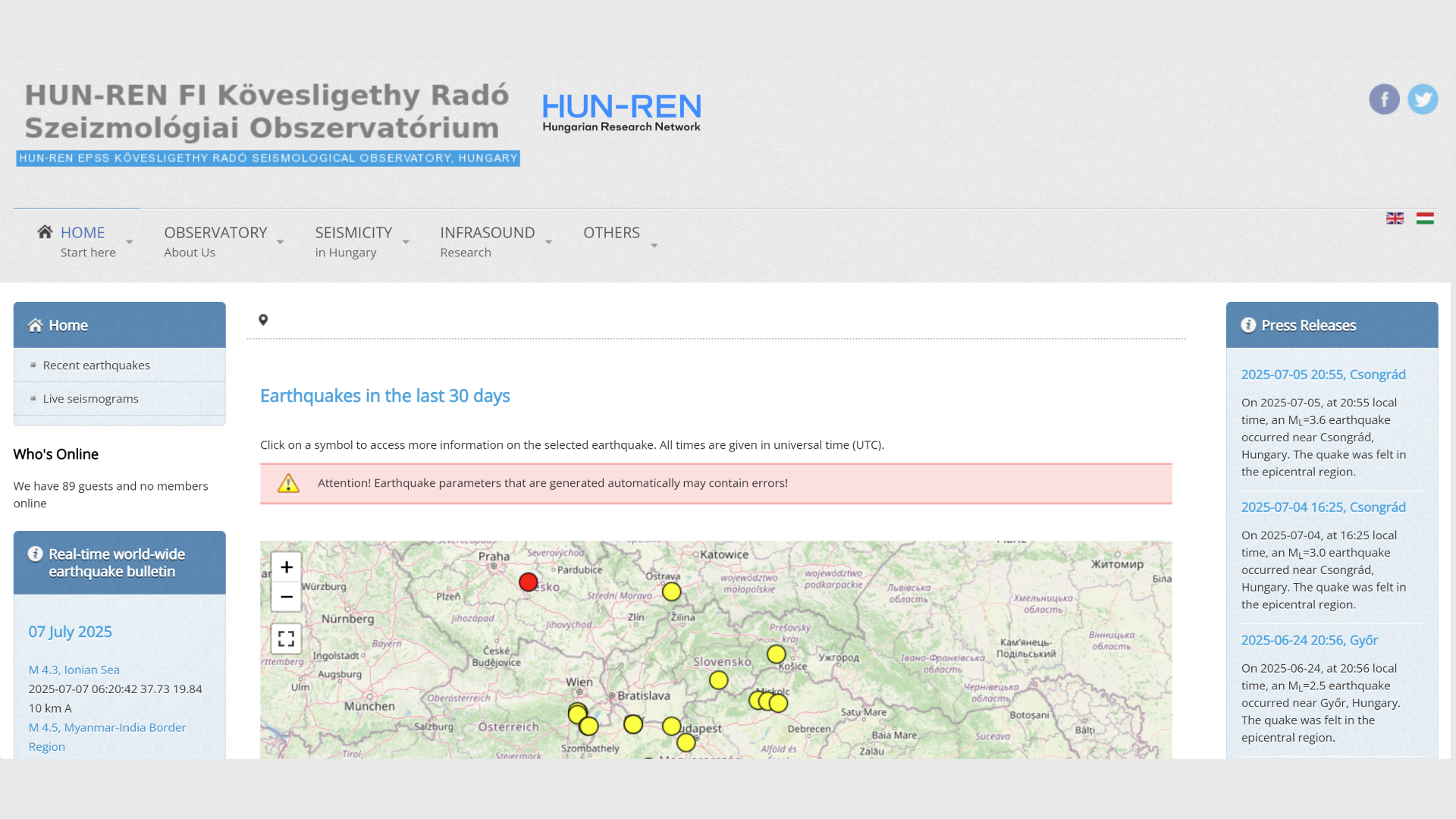ATK researchers demonstrate application of bioctive materials of alien goldenrod species as environmentally friendly compounds for protecting plants
The group of the Plant Protection Institute of the ELKH Centre for Agricultural Research (ATK) led by Ágnes Móricz has developed a more cost-effective process for identifying bioactive materials in plant tissue. Through use of the method, the researchers showed that certain constituents of formerly cultivated alien goldenrod species may be suitable for sustainable chemical protection against fungal infections in plants. Their results were published in the Journal of Chromatography A and the Journal of Agricultural and Food Chemistry.
It is commonly recognised that there is great demand in human and veterinary medicine, as well as in agriculture, for bioactive materials with new chemical structures as it is believed they may be applied to the treatment of various diseases. Due to the rise of (multi)resistence in pathogens, this is primarily true of antimicrobial materials. In medicine, however, there is a need for active ingredients with other effects that are more effective and have fewer side effects than drugs currently in use.
Plants protect themselves against harmful environmental factors with secondary metabolites, so bioactive compounds of various structures represent an inexhaustible repository. The researchers employed thin-layer and column chromotography in combination with other methods to develop a more cost-effective process than previously available for identifying bioactive materials in plant tissue.
The objective of the research group in this case was to explore the bioactive substances in various species of goldenrod. These alien, formerly garden plants may become invasive – i.e. move into ever larger territories – thereby restricting the living space and diversity of indigenous species, which can cause damage to both the natural world and agriculture. The discovery of such valuable metabolic products in these plants would represent a new reason for the removal of invasive species with large biomass, which would result in a dual – environmental and economic – benefit.
The only species of goldenrod indigenous to Hungary is the European goldenrod (Solidago virgaurea). In addition, three species of goldenrod from North America have expanded into the wild: the tall (S. gigantea), the Canadian (S. canadensis) and the grass-leaved (S. graminifolia or Euthamia graminifolia goldenrod, of which only the first two have become invasive.
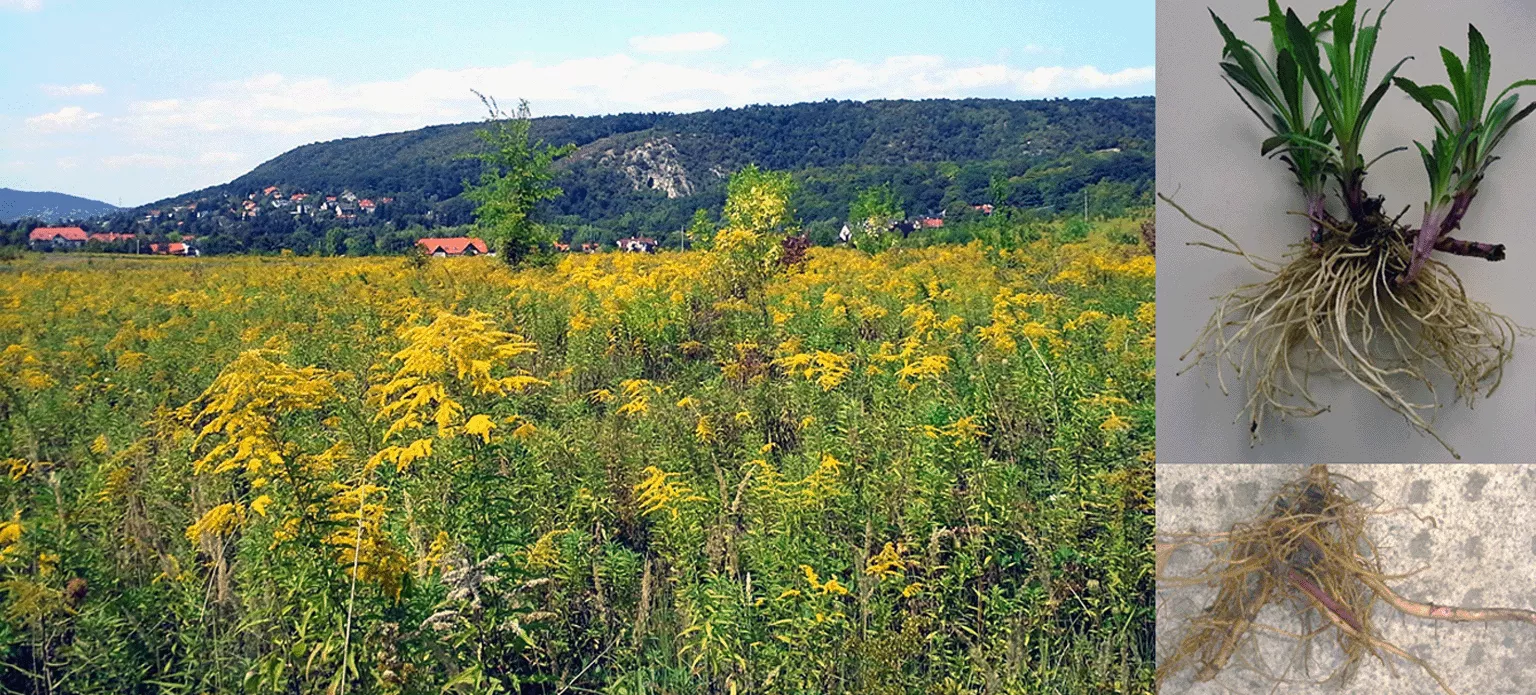
Canadian goldenrod field at Remeteszőlős (left), young shoot with root (top right), and roots of the tall goldenrod (top left)
Although only the part of the plant above the ground (herba) is used in traditional folk medicine, primarily to treat urinary tract inflammations, the researchers examined the components of root extracts in the first phase of experiments. The reason for this was that the roots of the tall and Canadian goldenrod also branch out quickly underground, so it is not sufficient to remove growths above ground to restrict their spread.
In the course of the experiment, the extracts from the goldenrods were found to contain antimicrobial, antidiabetic and cholonesterase inhibiting compounds, the latter of which are used to treat Alzheimer’s disease. It was possible to extract from the roots of the tall goldenrod several compounds (clerodane diterpenes) that effectively inhibit the growth of the Fusarium avenaceum fungus. Among other things, this fungus causes the fusarium disease in domestic cereal wheat, which causes considerable damage in the temperate zone worldwide. The compounds identified in the European, grass-leaved and decorative goldenrods – polyacetylenes and one benzil-bezoate derivative – proved to be effective in inhibiting the growth of the Fusarium avenaceum as well as the Bipolaris sorokinianafungus. The latter causes brown spot blotch on leaves, root rot and seedlings of lawn grass types, which include wheat and barley.
The individual components of goldenrod can therefore be suitable to provide sustainable chemical protection from fungal infections in plants. In future, the research group will continuously expand the number of plant pathogens included in the experiment, and will continue to map the bioactive secondary metabolites of goldenrod species.
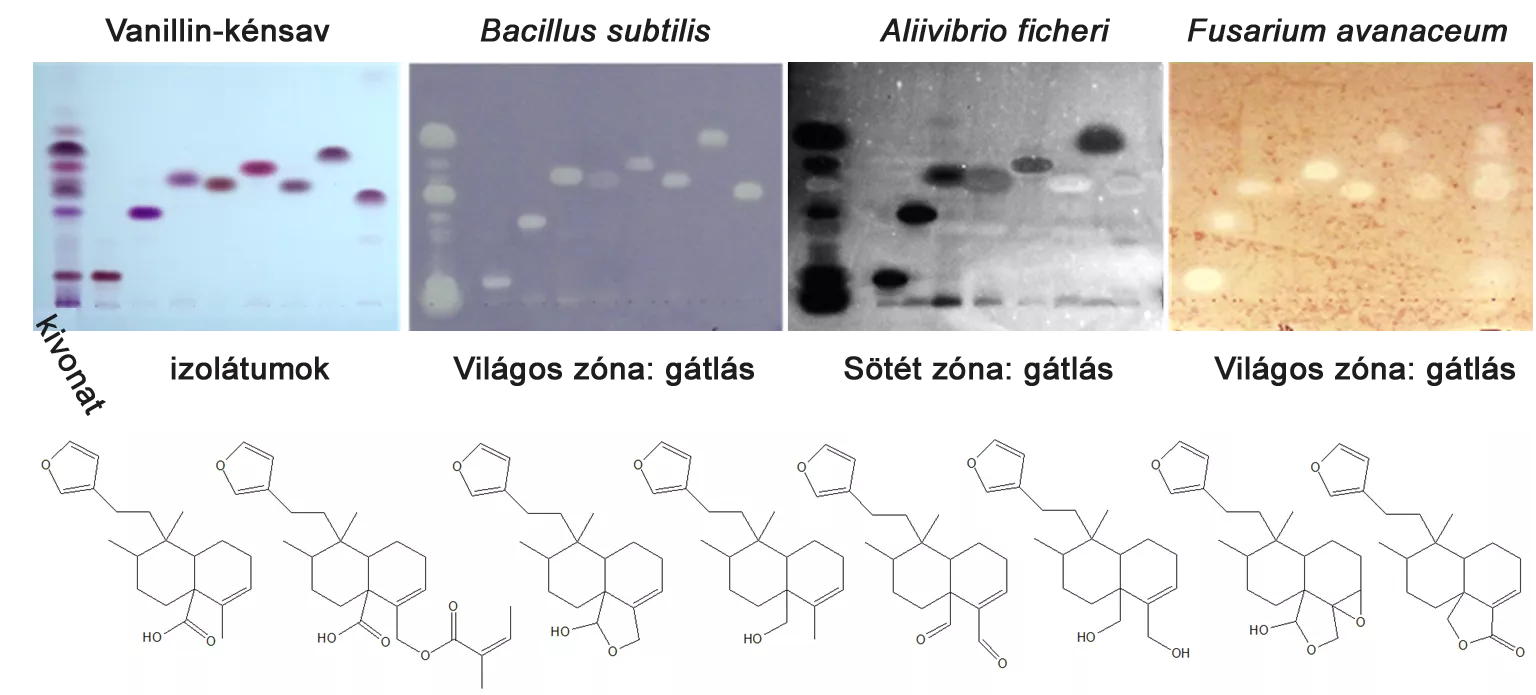
The thin-layer chromotographic separation and display with chemical reagents and biological tests (on the basis of their antimicrobial effect) of the root extract and components of the tall goldenrod (their structure is below)
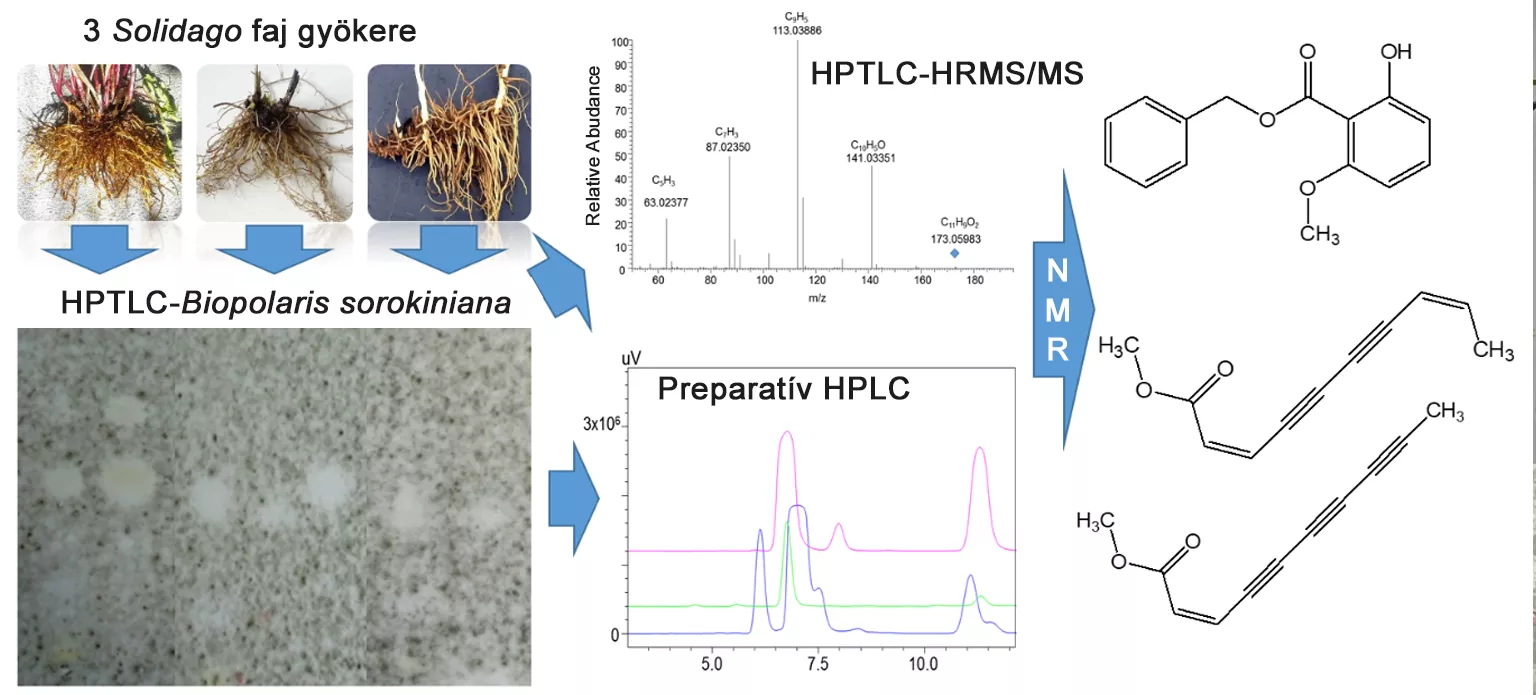
The presentation, characterisation, isolation and identification of root extracts of the European, grass-leaved and decorative goldenrod
Publications:
Ágnes M. Móricz, Maryam Jamshidi-Aidji, Dániel Krüzselyi, András Darcsi, Andrea Böszörményi, Péter Csontos, Szabolcs Béni, Péter G. Ott, Gertrud E. Morlock (2020) Distinction and valorization of 30 root extracts of five goldenrod (Solidago) species. J. Chromatogr. A 1611: 460602.
Ágnes M. Móricz, Dániel Krüzselyi, Péter G. Ott, Zsófia Garádi, Szabolcs Béni, Gertrud E. Morlock, József Bakonyi (2021) Bioactive clerodane diterpenes of giant goldenrod (Solidago gigantea Ait.) root extract. J. Chromatogr. A 1635: 461727.
Dániel Krüzselyi, József Bakonyi, Péter G. Ott, András Darcsi, Péter Csontos, Gertrud E. Morlock, Ágnes M. Móricz (2021) Goldenrod Root Compounds Active against Crop Pathogenic Fungi. J. Agric. Food Chem. 69, 12686−12694.
